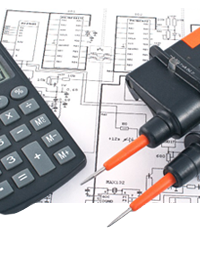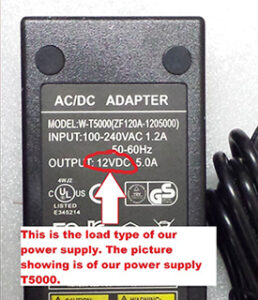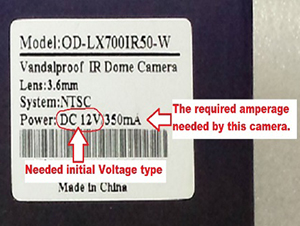Calculating Voltage Drops
All security cameras have a minimum power requirement. When running long lengths of cable you may experience a drop in voltage that will cause loss in video quality, stress on the chipset or the camera may not function at all. Our Voltage Drop Calculator will assist you in determining the total voltage loss over a specified distance and the voltage you will have at the destination based on different wire gauges.
How to use this Calculator Tool: Fill in the Voltage, AC/DC and Amps fields below to the specifications of your power source. Then enter the length of the cable from the power source to the camera and then the gauge of the cable you will be using. Finally you may click the “Calculate Voltage Drop” button.

Voltage Drop Calculator
This calculator was created for the estimation of a voltage drop in an electrical circuit based on the wire size, distance, and anticipated load current. Please note that this calculator does not adjust to the factor of different environments. The calculator is based on a circuit that is operating under normal conditions in room temperature with a normal frequency. An actual voltage drop can vary depending on the condition of the wire, the conduit (if any) being used, the varying temperature of the environment location, the connector, the surrounding frequency, etc. It is recommended that the voltage drop be less than 5% under a fully loaded condition.

An Example
A “Voltage drop” defines how the supplied energy of a (load) voltage source is reduced as electrical current moves through an electric circuit. Our voltage drop calculator will help determine the proper wire size for a cable run based on voltage drop and current carrying capacity. Before we begin please make sure you have found the following:
1. Find out your Initial Voltage Load needed by your device
2. Figure out if the power supply you are working with distributes AC or DC
3. Locate the “Current Amperage” of your device (Camera, Microphone, IR, etc.)
4. Cable Length (ft.)
5. Cable Gauge (AWG)
{Note: The NEC Industry standard is a voltage drop of no greater than 10%. We suggest no more than 5% on a full load due to the sensitivity of electronic equipment.}
Now that we have gathered all the information well need let’s begin. I’ll enter in the initial voltage of our load (these specifications can be found on your power supply). Choose if your power supply distributes Volts in a DC or AC load. I’ll then choose which voltage type the camera(s) operate within. (Typically, with our products, the overall selections will be 12 VDC and 24 VAC.)
I’ll enter the current of our camera in amps. (Note: 1 amp = 1000 mA. Thus, if your camera draws 300 mA, enter 0.3 into this field.)
Next, I will enter the distance of our cable in feet.
Then input the gauge size of your cable. (CCTV standard is 18AWG)
Click ‘Calculate’ to receive your results.

Example 1:
With 12VDC, a 350mA camera at 100 feet on standard 18AWG will have a voltage drop of 0.45 volts. Industry standard is +/- 10% which is 1.2 volts. In this example, I am within the limits.
Example 2:
A 12VDC camera requiring 0.8 amps or 800ma (which is not unreasonable for an IR camera) at a distance of 175 feet on 18AWG would give you a drop of 1.79 volts, which is greater than acceptable 10% loss limits. The way to get around this is to power the camera from a closer distance giving you a shorter cable run, increasing the size of your power wire or using an AC power supply (You will need a converter hyperlink to protect the camera). In this example, increasing the power wire to 16AWG would decrease the voltage drop to 1.12 volts, which is within limits.
NOTE: These calculators are provided for general information only and are not intended as a substitute for professional consultation. We advise you to call us if you have any question as to the accuracy of this information, or if you need help interpreting this information. Security will not be held liable for damages resulting from the use, misuse or unlawful use of the information contained herein.
